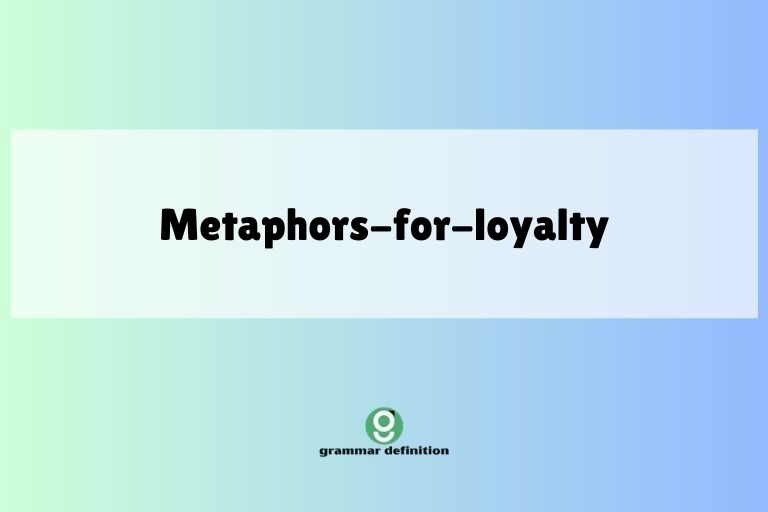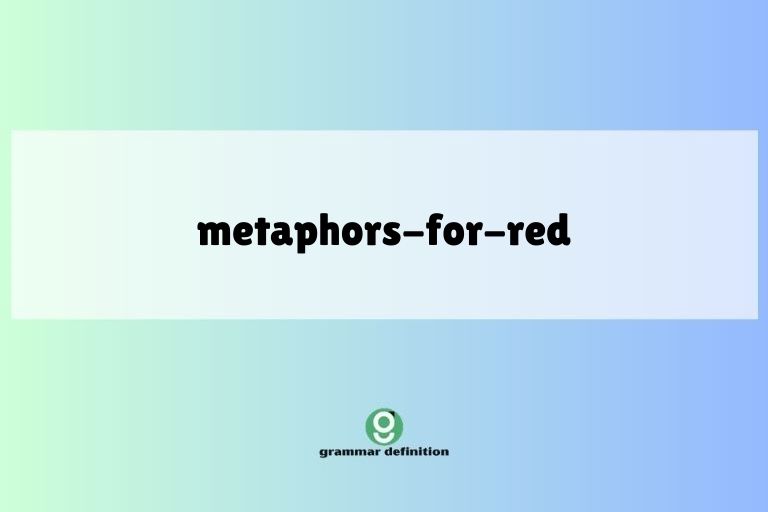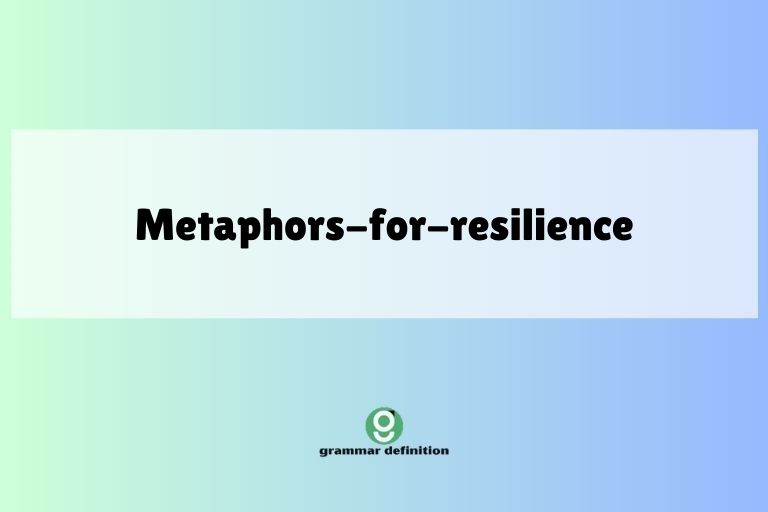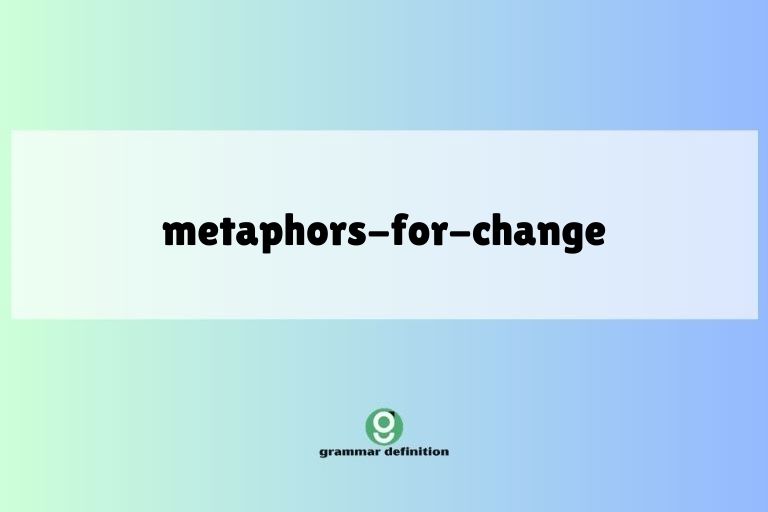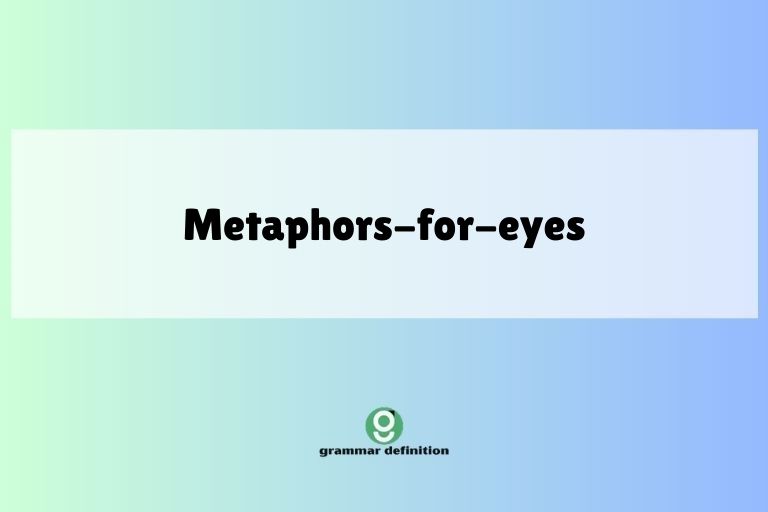Thanksgiving Through the Looking Glass: Mastering Metaphors
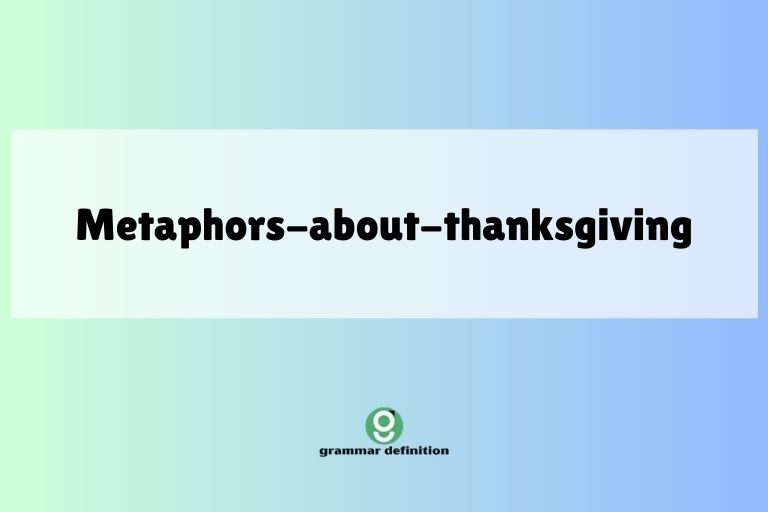
Metaphors are powerful tools in the English language, allowing us to understand and express abstract concepts by relating them to more concrete ideas. When applied to Thanksgiving, metaphors can reveal deeper cultural meanings and emotional connections associated with this significant holiday.
Understanding these metaphors not only enhances your grasp of English but also provides insights into the cultural values and traditions surrounding Thanksgiving. This article is designed for English language learners of all levels, from beginner to advanced, who wish to improve their comprehension and expressive abilities by exploring the rich world of Thanksgiving metaphors.
Table of Contents
- Introduction
- What is a Metaphor?
- Structural Breakdown of Metaphors
- Types of Metaphors
- Thanksgiving Metaphor Examples
- Usage Rules for Metaphors
- Common Mistakes with Metaphors
- Practice Exercises
- Advanced Topics in Metaphorical Language
- Frequently Asked Questions
- Conclusion
What is a Metaphor?
A metaphor is a figure of speech that directly compares two unrelated things without using “like” or “as.” It asserts that one thing is another, creating a vivid and often unexpected connection in the reader’s or listener’s mind. Unlike similes, which use explicit comparison words, metaphors imply the comparison, making them more impactful and thought-provoking. Metaphors are essential for conveying abstract ideas, emotions, and experiences in a relatable and engaging way. They add depth and color to language, making it more persuasive and memorable.
The function of a metaphor is to transfer qualities or characteristics from one concept to another. This transfer helps to illuminate the target concept, making it easier to understand or appreciate.
In the context of Thanksgiving, metaphors can help us explore the various facets of the holiday, such as the themes of gratitude, family, tradition, and history. By using metaphors, we can express these themes in a more nuanced and creative manner, enriching our understanding of Thanksgiving and its significance.
Structural Breakdown of Metaphors
A metaphor typically consists of two main elements: the tenor and the vehicle. The tenor is the subject being described, while the vehicle is the object or concept used to describe it. The vehicle carries the metaphorical meaning and transfers its qualities to the tenor. Understanding this structure is crucial for both interpreting and creating effective metaphors.
For example, in the metaphor “Thanksgiving is a tapestry of traditions,” the tenor is “Thanksgiving,” and the vehicle is “tapestry.” The qualities associated with a tapestry, such as being intricately woven, colorful, and representative of different elements coming together, are transferred to Thanksgiving. This suggests that Thanksgiving is a complex and rich holiday composed of various customs and practices.
The ground of a metaphor refers to the shared characteristics or similarities between the tenor and the vehicle. Identifying the ground helps to clarify the metaphorical connection and ensure that the metaphor is meaningful and relevant. In the “Thanksgiving is a tapestry” example, the ground includes the ideas of complexity, richness, and the coming together of different elements.
Types of Metaphors
Metaphors can be classified into several types based on their structure and usage. Understanding these different types can help you to better appreciate the versatility and power of metaphorical language.
Implicit Metaphors
An implicit metaphor subtly suggests the comparison without explicitly stating the vehicle. The vehicle is implied through descriptive language and context clues, requiring the reader to infer the metaphorical connection.
This type of metaphor can be more nuanced and engaging, as it involves the reader in the process of interpretation.
For instance, instead of saying “The aroma of Thanksgiving dinner was a warm embrace,” an implicit metaphor might state, “Warmth filled the room as the scent of roasting turkey wafted through the air.” Here, the “warm embrace” is implied through the description of the aroma and its effect, rather than being directly stated.
Explicit Metaphors
An explicit metaphor directly states the comparison between the tenor and the vehicle. This type of metaphor is clear and straightforward, leaving little room for ambiguity.
Explicit metaphors are often used to make a strong and immediate impact.
An example of an explicit metaphor related to Thanksgiving is “Thanksgiving is a cornucopia of blessings.” This statement directly equates Thanksgiving with a cornucopia, emphasizing the abundance and variety of good things associated with the holiday.
Extended Metaphors
An extended metaphor is a metaphor that is developed over several lines or paragraphs. It involves exploring various aspects of the metaphorical connection, providing a more detailed and comprehensive comparison.
Extended metaphors are often used to create a richer and more complex understanding of the tenor.
Consider this extended metaphor about Thanksgiving: “Thanksgiving is a journey back to our roots, a pilgrimage to the table where stories are shared, and traditions are rekindled. It’s a voyage through generations, each dish a milestone, each conversation a landmark.
The destination is not just a full stomach, but a heart filled with gratitude and connection.” This extended metaphor develops the idea of Thanksgiving as a journey, exploring different facets of the holiday in detail.
Dead Metaphors
A dead metaphor is a metaphor that has become so common that it is no longer recognized as a figure of speech. Its original metaphorical meaning has been lost through overuse, and it is now used as a literal expression.
Dead metaphors are often unnoticed in everyday language.
While it’s less common to find dead metaphors directly related to Thanksgiving itself, concepts associated with it can become dead metaphors. For example, saying someone is “stuffed” after a big meal is a dead metaphor.
The original metaphorical meaning, comparing a person to a stuffed object, is no longer consciously considered.
Thanksgiving Metaphor Examples
Thanksgiving, with its rich traditions and cultural significance, provides fertile ground for metaphorical expression. Exploring these metaphors can deepen our understanding of the holiday’s various aspects and themes.
Thanksgiving as a Feast
The Thanksgiving feast is often used metaphorically to represent abundance, plenty, and celebration. These metaphors highlight the importance of food and communal dining in the holiday tradition.
The following table provides examples of metaphors that relate Thanksgiving to the concept of a feast. These examples show how the abundance and celebratory nature of the Thanksgiving meal can be conveyed through metaphorical language.
| Metaphor | Explanation |
|---|---|
| Thanksgiving is a banquet of blessings. | This metaphor equates Thanksgiving with a lavish and abundant feast, emphasizing the numerous blessings to be thankful for. |
| The Thanksgiving table is a cornucopia of colors and flavors. | This metaphor uses the image of a cornucopia (horn of plenty) to represent the variety and richness of the Thanksgiving meal. |
| The aroma of Thanksgiving dinner is a symphony of scents. | This metaphor compares the complex and harmonious blend of smells from the Thanksgiving meal to a musical symphony. |
| Thanksgiving is a culinary canvas of family recipes. | This metaphor presents Thanksgiving as a work of art created from cherished family recipes, highlighting the tradition and heritage involved. |
| The Thanksgiving meal is a river of gravy flowing over a mountain of mashed potatoes. | This vivid image emphasizes the abundance and richness of the Thanksgiving meal. |
| Thanksgiving dinner is a treasure chest of culinary delights. | This metaphor suggests that the meal is full of valuable and enjoyable dishes. |
| The feast is a tapestry woven with threads of tradition and taste. | Comparing the feast to a tapestry highlights the intricate combination of traditions and flavors. |
| Thanksgiving is a grand buffet of gratitude. | This metaphor combines the idea of a large meal with the theme of thankfulness. |
| The dinner table is an altar to culinary heritage. | This metaphor elevates the meal to a sacred tradition, honoring the culinary history. |
| Thanksgiving is a harvest of flavors, reaped and enjoyed together. | This metaphor connects the holiday to the agricultural roots of the harvest season. |
| The meal is a melting pot of family favorites. | This metaphor suggests a harmonious blend of different dishes that everyone loves. |
| Thanksgiving is a culinary masterpiece, years in the making. | This metaphor emphasizes the effort and tradition that go into preparing the Thanksgiving meal. |
| The feast is a garden of gourmand delights. | This metaphor paints a picture of a beautiful and delicious spread of food. |
| Thanksgiving is a cornucopia overflowing with love and laughter. | This combines the traditional symbol of abundance with emotional elements. |
| The Thanksgiving table is a stage for culinary performances. | This metaphor likens the preparation and presentation of the meal to a theatrical performance. |
| Each dish is a chapter in the story of our family’s food traditions. | This metaphor suggests that the meal tells a story about the family’s culinary history. |
| Thanksgiving is a culinary symphony, conducted by the head chef. | This extends the musical metaphor, adding the element of leadership and direction. |
| The feast is a mosaic of flavors, each piece contributing to the whole. | This metaphor highlights the diversity and harmony of the dishes. |
| Thanksgiving is a culinary journey from appetizer to dessert. | This metaphor evokes the sense of adventure and progression through the meal. |
| The table is a canvas, and the food is the art. | This metaphor equates the meal to a visual art form, emphasizing the beauty and presentation. |
| Thanksgiving is a treasure trove of homemade goodness. | This suggests that the meal is full of valuable and delicious items made with care. |
| The dinner is a festival of flavors, celebrating the bounty of the harvest. | This metaphor connects the meal to the celebration of a successful harvest. |
| Thanksgiving is a culinary hug, warm and comforting. | This metaphor conveys the emotional comfort and satisfaction of the meal. |
| The feast is a library of recipes, passed down through generations. | This metaphor highlights the historical and cultural significance of the recipes. |
Thanksgiving as a Gathering
Metaphors related to Thanksgiving as a gathering emphasize the social and communal aspects of the holiday, focusing on family, friends, and togetherness.
The following table provides examples of metaphors that relate Thanksgiving to the concept of a gathering. These examples illustrate how the themes of family, community, and connection can be expressed through metaphorical language.
| Metaphor | Explanation |
|---|---|
| Thanksgiving is a reunion of hearts. | This metaphor emphasizes the emotional connection and coming together of loved ones during the holiday. |
| The Thanksgiving table is a magnet, drawing family together. | This image suggests a strong force that attracts family members to the shared meal. |
| Thanksgiving is a symphony of voices, laughter, and stories. | Comparing the gathering to a symphony highlights the harmonious blend of different voices and interactions. |
| The holiday is a bridge, connecting past and present generations. | This metaphor suggests that Thanksgiving creates a link between family members from different time periods. |
| Thanksgiving is a quilt of shared memories, stitched together with love. | This metaphor uses the image of a quilt to represent the collection of cherished memories and the love that binds family members together. |
| The family is a forest, and Thanksgiving is the annual reunion of its trees. | This metaphor presents the family as a natural ecosystem, with Thanksgiving as a time for all members to come together. |
| Thanksgiving is a homecoming, a return to the warmth of family. | This metaphor evokes the sense of comfort and belonging associated with returning home. |
| The gathering is a campfire, radiating warmth and connection. | This image suggests a central point of warmth and togetherness. |
| Thanksgiving is a mosaic of faces, each unique and beautiful. | This metaphor highlights the diversity and individuality of the family members. |
| The holiday is a tapestry woven with threads of kinship and tradition. | This metaphor emphasizes the intricate combination of family ties and customs. |
| Thanksgiving is a harbor, a safe place for family to gather and reconnect. | This metaphor suggests a secure and comforting environment for family members. |
| The gathering is a garden, blooming with love and laughter. | This metaphor paints a picture of a flourishing and joyful environment. |
| Thanksgiving is a constellation of relatives, shining brightly together. | This metaphor presents the family as a group of stars, shining together in the night sky. |
| The holiday is a book, filled with chapters of family history. | This metaphor suggests that Thanksgiving is a time to reflect on and celebrate the family’s story. |
| Thanksgiving is a circle, unbroken and ever-renewing. | This metaphor emphasizes the continuity and enduring nature of family bonds. |
| The gathering is a river, flowing with stories from the past. | This image suggests a continuous stream of narratives and memories. |
| Thanksgiving is a stage, where family members play their roles in the annual drama. | This metaphor likens the gathering to a theatrical performance, with each person contributing to the overall experience. |
| The holiday is a puzzle, with each family member a unique piece. | This metaphor suggests that the family is a complex whole made up of individual parts. |
| Thanksgiving is a bridge, spanning the distance between loved ones. | This metaphor emphasizes the role of the holiday in bringing geographically separated family members together. |
| The gathering is a beacon, guiding family members home. | This image suggests that Thanksgiving serves as a guiding light, drawing family members back to their roots. |
| Thanksgiving is a forest of family trees, their roots intertwined. | This metaphor evokes the interconnectedness and shared history of the family. |
| The holiday is a song, sung in harmony by generations. | This metaphor highlights the shared traditions and experiences that bind the family together. |
| Thanksgiving is a tapestry of faces, each thread representing a unique individual. | This metaphor emphasizes the diversity and individuality of the family members. |
| The gathering is a mosaic of memories, each piece adding to the overall picture. | This metaphor suggests that the family’s shared experiences create a rich and complex history. |
| Thanksgiving is a wellspring of love, overflowing with affection and gratitude. | This metaphor emphasizes the abundance of positive emotions associated with the holiday. |
Thanksgiving as Gratitude
Metaphors that portray Thanksgiving as gratitude highlight the importance of thankfulness, appreciation, and reflection on blessings. These metaphors emphasize the emotional and spiritual aspects of the holiday.
The following table provides examples of metaphors that relate Thanksgiving to the concept of gratitude. These examples illustrate how the themes of thankfulness, appreciation, and reflection can be expressed through metaphorical language.
| Metaphor | Explanation |
|---|---|
| Thanksgiving is a wellspring of gratitude. | This metaphor suggests that Thanksgiving is a source of thankfulness that flows abundantly. |
| Thanksgiving is a symphony of thankfulness, played by grateful hearts. | Comparing the feeling of gratitude to a symphony suggests a harmonious and beautiful expression of thankfulness. |
| The holiday is a garden of appreciation, blooming with blessings. | This metaphor uses the image of a garden to represent the growth and flourishing of thankfulness. |
| Thanksgiving is a treasure chest filled with the jewels of appreciation. | This metaphor presents thankfulness as something valuable and precious. |
| The spirit of Thanksgiving is a warm blanket, wrapping us in gratitude. | This metaphor evokes the feeling of comfort and security associated with being thankful. |
| Thanksgiving is a harvest of blessings, reaped with grateful hearts. | This metaphor connects the holiday to the agricultural roots of the harvest season and emphasizes the feeling of gratitude. |
| The holiday is a mirror, reflecting the abundance in our lives. | This metaphor suggests that Thanksgiving provides an opportunity to reflect on and appreciate the good things in our lives. |
| Thanksgiving is a song of gratitude, sung from the heart. | This metaphor compares the feeling of thankfulness to a heartfelt and genuine expression of appreciation. |
| The spirit of Thanksgiving is a gentle rain, nourishing our souls with gratitude. | This metaphor evokes the image of rain providing sustenance and growth, symbolizing the nourishing effect of gratitude. |
| Thanksgiving is a lighthouse, guiding us towards a sea of thankfulness. | This metaphor suggests that Thanksgiving serves as a guide, leading us towards a greater sense of appreciation. |
| The holiday is a compass, pointing us in the direction of gratitude. | This metaphor suggests that Thanksgiving helps us to focus on and prioritize thankfulness. |
| Thanksgiving is a well, drawing up the deep waters of appreciation. | This metaphor suggests that Thanksgiving provides a way to access and express our deepest feelings of thankfulness. |
| The spirit of Thanksgiving is a warm fire, kindling the flames of gratitude. | This metaphor evokes the image of a fire providing warmth and light, symbolizing the warmth and illumination of gratitude. |
| Thanksgiving is a bridge, connecting us to the blessings in our lives. | This metaphor suggests that Thanksgiving helps us to recognize and appreciate the good things in our lives. |
| The holiday is a canvas, painted with the colors of gratitude. | This metaphor uses the image of a canvas to represent the expression of thankfulness through various forms. |
| Thanksgiving is a garden, where seeds of gratitude blossom into joy. | This metaphor suggests that thankfulness leads to happiness and fulfillment. |
| The spirit of Thanksgiving is a gentle breeze, carrying whispers of appreciation. | This metaphor evokes the image of a gentle breeze spreading the feeling of thankfulness. |
| Thanksgiving is a mirror reflecting the beauty of our blessings. | This metaphor reminds us to see and appreciate the good things in our lives. |
| The holiday is a treasure map, leading us to the riches of gratitude. | This metaphor suggests that thankfulness is a valuable reward that can be discovered. |
| Thanksgiving is a symphony, conducted by the heart’s gratitude. | This metaphor elevates gratitude to a powerful and harmonious force. |
| The spirit of Thanksgiving is a warm hug, embracing us with thankfulness. | This metaphor conveys the comforting and reassuring feeling of being grateful. |
| Thanksgiving is a celebration of the heart’s harvest of gratitude. | This metaphor connects the holiday to the abundance of thankfulness in our hearts. |
| The holiday is a wellspring of joy, overflowing with grateful moments. | This metaphor suggests that thankfulness leads to a continuous stream of happiness. |
| Thanksgiving is a beacon of light, illuminating the path to gratitude. | This metaphor guides us toward a deeper understanding and practice of thankfulness. |
| The spirit of Thanksgiving is a gentle rain, nourishing our souls with appreciation. | This metaphor emphasizes the nurturing and revitalizing effect of gratitude. |
Thanksgiving as History
Metaphors that relate Thanksgiving to history connect the holiday to its origins, traditions, and the stories of the past. These metaphors often emphasize the importance of remembering and honoring the historical context of Thanksgiving.
The following table provides examples of metaphors that relate Thanksgiving to the concept of history. These examples illustrate how the themes of tradition, heritage, and remembrance can be expressed through metaphorical language.
| Metaphor | Explanation |
|---|---|
| Thanksgiving is a history book, each dish a chapter of our past. | This metaphor suggests that the Thanksgiving meal tells the story of our history and traditions. |
| Thanksgiving is a time capsule, preserving the flavors and traditions of our ancestors. | This metaphor presents Thanksgiving as a way to connect with and remember the past. |
| The holiday is a museum, displaying the artifacts of our family’s heritage. | This metaphor uses the image of a museum to represent the preservation and display of historical artifacts. |
| Thanksgiving is a tapestry, woven with the threads of history and tradition. | This metaphor uses the image of a tapestry to represent the intricate combination of historical and traditional elements. |
| The celebration is a bridge, connecting us to the pilgrims and their journey. | This image suggests a link between modern celebrations and the historical events of the first Thanksgiving. |
| Thanksgiving is a memorial, honoring the struggles and triumphs of the past. | This metaphor suggests that Thanksgiving is a time to remember and pay tribute to historical figures and events. |
| The holiday is a library, filled with the stories of our ancestors. | This metaphor presents Thanksgiving as a source of historical knowledge and information. |
| Thanksgiving is a pilgrimage, a journey back to our roots. | This metaphor suggests that Thanksgiving is a way to reconnect with our origins and heritage. |
| The celebration is a stage, where history comes to life through stories and traditions. | This metaphor likens Thanksgiving to a theatrical performance, with historical events being reenacted and remembered. |
| Thanksgiving is a mirror, reflecting the faces of those who came before us. | This metaphor suggests that Thanksgiving provides a way to see and connect with our ancestors. |
| The holiday is a compass, guiding us back to the values and principles of our past. | This metaphor suggests that Thanksgiving helps us to stay true to our historical values and beliefs. |
| Thanksgiving is a well, drawing up the wisdom and experiences of our ancestors. | This metaphor suggests that Thanksgiving provides a way to access and learn from the past. |
| The celebration is a fire, warming us with the spirit of our heritage. | This image evokes the feeling of comfort and connection associated with remembering our historical roots. |
| Thanksgiving is a song, sung in harmony with the voices of our ancestors. | This metaphor suggests that Thanksgiving is a way to express our shared history and traditions. |
| The holiday is a garden, where the seeds of our history continue to grow and flourish. | This metaphor uses the image of a garden to represent the ongoing development and evolution of our historical traditions. |
| Thanksgiving is a monument, commemorating the events and people of our past. | This metaphor suggests that Thanksgiving serves as a lasting tribute to historical figures and events. |
| The celebration is a river, flowing with the currents of history and tradition. | This image suggests a continuous stream of historical events and customs. |
| Thanksgiving is a bridge, spanning the gap between the past and the present. | This metaphor emphasizes the role of the holiday in connecting us to our historical roots. |
| The holiday is a map, guiding us through the landscape of our history. | This metaphor suggests that Thanksgiving provides a way to navigate and understand our historical heritage. |
| Thanksgiving is a symphony of echoes from the past, resonating in our present. | This metaphor highlights how historical events continue to influence our lives today. |
| The spirit of Thanksgiving is a time traveler, bringing us closer to our historical roots. | This metaphor suggests that Thanksgiving allows us to experience and connect with the past. |
| Thanksgiving is a cornerstone, supporting the edifice of our cultural identity. | This metaphor emphasizes the fundamental role of Thanksgiving in shaping our cultural heritage. |
| The holiday is a compass, guiding us back to the values of our ancestors. | This metaphor suggests that Thanksgiving helps us to maintain and honor the principles of our historical predecessors. |
| Thanksgiving is a book of memories, written with the ink of shared historical experiences. | This metaphor portrays Thanksgiving as a collective record of significant historical events. |
| The celebration is a beacon of remembrance, illuminating the path of our historical journey. | This metaphor suggests that Thanksgiving serves as a reminder of our collective past and its influence on our present. |
Thanksgiving as Tradition
Metaphors that portray Thanksgiving as tradition emphasize the recurring customs, rituals, and practices that define the holiday. These metaphors often highlight the importance of continuity, heritage, and cultural identity.
The following table provides examples of metaphors that relate Thanksgiving to the concept of tradition. These examples illustrate how the themes of recurring customs, rituals, and practices can be expressed through metaphorical language.
| Metaphor | Explanation |
|---|---|
| Thanksgiving is a tapestry of traditions, woven through generations. | This metaphor suggests that Thanksgiving is a rich and complex blend of customs passed down through time. |
| Thanksgiving is a ritual dance, performed each year with familiar steps. | This metaphor compares the holiday to a recurring and predictable set of actions. |
| The holiday is a chain, linking us to our past and future. | This metaphor suggests that Thanksgiving connects us to our heritage and provides continuity for future generations. |
| Thanksgiving is a cornerstone, supporting the edifice of our cultural identity. | This metaphor emphasizes the fundamental role of Thanksgiving in shaping our cultural heritage. |
| The celebration is a river, flowing with the currents of tradition. | This image suggests a continuous stream of customs and practices. |
| Thanksgiving is a compass, guiding us back to our cultural roots. | This metaphor suggests that Thanksgiving helps us to stay true to our cultural heritage. |
| The holiday is a song, sung in harmony with the voices of our ancestors. | This metaphor suggests that Thanksgiving is a way to express our shared traditions. |
| Thanksgiving is a recipe, passed down through generations with love. | This metaphor uses the image of a recipe to represent the transmission of customs and practices. |
| The celebration is a time capsule, preserving the customs and rituals of our ancestors. | This metaphor presents Thanksgiving as a way to connect with and remember the past. |
| Thanksgiving is a garden, where the seeds of tradition continue to grow and flourish. | This metaphor uses the image of a garden to represent the ongoing development and evolution of our traditions. |
| The holiday is a map, guiding us through the landscape of our cultural heritage. | This metaphor suggests that Thanksgiving provides a way to navigate and understand our cultural traditions. |
| Thanksgiving is a monument, commemorating the customs and practices of our past. | This metaphor suggests that Thanksgiving serves as a lasting tribute to historical customs. |
| The celebration is a fire, warming us with the spirit of our traditions. | This image evokes the feeling of comfort and connection associated with remembering our cultural roots. |
| Thanksgiving is a book, filled with the stories of our traditional practices. | This metaphor presents Thanksgiving as a source of knowledge about our cultural customs. |
| The holiday is a well, drawing up the wisdom and customs of our ancestors. | This metaphor suggests that Thanksgiving provides a way to access and learn from the past. |
| Thanksgiving is a pilgrimage, a journey back to our cultural origins. | This metaphor suggests that Thanksgiving is a way to reconnect with our heritage. |
| The celebration is a stage, where traditions come to life through reenactments and storytelling. | This metaphor likens Thanksgiving to a theatrical performance, with cultural customs being reenacted and remembered. |
| Thanksgiving is a mirror, reflecting the customs and practices of those who came before us. | This metaphor suggests that Thanksgiving provides a way to see and connect with our ancestors’ traditions. |
| The holiday is a chain, linking the past to the present through cherished customs. | This emphasizes the continuity and unbroken connection between generations. |
| Thanksgiving is a treasure chest, holding the valuable gems of our cultural heritage. | This metaphor suggests that our traditions are precious and worth preserving. |
| The spirit of Thanksgiving is a guardian, protecting the flame of our traditions. | This emphasizes the importance of preserving our cultural customs. |
| Thanksgiving is a time capsule, preserving the essence of our cultural identity. | This metaphor suggests that the holiday keeps our traditions alive for future generations. |
| The holiday is a mosaic, with each tradition a unique and essential piece. | This emphasizes the diversity and importance of individual customs. |
| Thanksgiving is a ritual, repeated annually with love and reverence. | This highlights the sacred and unchanging nature of the holiday. |
| The spirit of Thanksgiving is a gentle hand, guiding us through the maze of our traditions. | This metaphor suggests that the holiday helps us understand and navigate our cultural customs. |
Usage Rules for Metaphors
Using metaphors effectively requires understanding certain rules and guidelines. The most important rule is to ensure that the metaphor is appropriate and relevant to the context. The comparison should make sense and enhance the understanding or impact of the message.
Another important rule is to avoid mixed metaphors, which occur when two or more incompatible metaphors are combined in a single statement. Mixed metaphors can be confusing and undermine the clarity of the message. For example, “Let’s nip it in the bud before it snowballs” combines two unrelated images (nipping a bud and a snowball rolling), creating a nonsensical statement.
It is also important to be mindful of overused or cliché metaphors. While some dead metaphors are acceptable in everyday language, using too many overused metaphors can make your writing or speech sound unoriginal and uninspired. Strive to create fresh and imaginative metaphors that will engage your audience.
Common Mistakes with Metaphors
One common mistake is using metaphors that are too complex or obscure. The metaphor should be easily understood by the intended audience. If the comparison is too far-fetched or requires specialized knowledge, it may fail to communicate effectively.
Another frequent error is using metaphors that are inconsistent with the tone or style of the writing or speech. The metaphor should be appropriate for the overall context and audience. For example, using a highly informal or humorous metaphor in a serious or formal setting may be inappropriate.
Finally, many learners struggle with mixing metaphors. This creates confusion and weakens the impact of the message. It’s essential to maintain consistency within your metaphorical expressions.
Here are some examples of common mistakes with metaphors, along with corrections:
| Incorrect | Correct | Explanation |
|---|---|---|
| The Thanksgiving feast was a tsunami of flavor that set sail on my taste buds. | The Thanksgiving feast was a
tsunami of flavor. |
This mixes the metaphor of a tsunami with the image of setting sail, creating an inconsistent comparison. The corrected version removes the sailing imagery to maintain consistency. |
| Gratitude is the engine of Thanksgiving, fueling the seeds of joy. | Gratitude is the seed of Thanksgiving, fueling the joy. | This mixes the metaphor of an engine with the image of seeds, creating an inconsistent comparison. The corrected version uses a single metaphor to maintain consistency. |
| Family traditions are the bedrock of Thanksgiving, a river flowing through our hearts. | Family traditions are the bedrock of Thanksgiving, the foundation of our memories. | This mixes the metaphor of a bedrock with the image of a river flowing through our hearts, creating an inconsistent comparison. The corrected version uses a single metaphor to maintain consistency. |
Practice Exercises
To improve your understanding and usage of Thanksgiving metaphors, try the following exercises:
- Identify the Metaphor: Read the following sentences and identify the metaphor used in each. Explain the tenor, vehicle, and ground of each metaphor.
- Thanksgiving is a cornucopia of blessings.
- Family traditions are the quilt of our Thanksgiving memories.
- Gratitude is the secret ingredient in the Thanksgiving feast.
- Complete the Metaphor: Finish the following sentences by adding a suitable metaphor.
- The aroma of Thanksgiving dinner is like __________.
- Thanksgiving is a journey to __________.
- The Thanksgiving table is a stage for __________.
- Create Your Own Metaphor: Write three original metaphors about Thanksgiving, focusing on different aspects of the holiday (e.g., the feast, the gathering, gratitude).
- Correct the Mixed Metaphor: Identify and correct the mixed metaphor in the following sentence: “The Thanksgiving spirit is a beacon of hope that sets sail on a sea of gratitude.”
Advanced Topics in Metaphorical Language
For advanced learners, exploring more complex aspects of metaphorical language can further enhance your understanding and expressive abilities. Some advanced topics include:
- Conceptual Metaphors: These are underlying metaphorical systems that shape our understanding of abstract concepts. For example, the conceptual metaphor “ARGUMENT IS WAR” influences how we talk about arguments (e.g., “He attacked my points,” “I defended my position”).
- Metonymy: This is a figure of speech in which one thing is represented by something closely associated with it (e.g., “The White House issued a statement” – The White House representing the President or the administration).
- Irony and Sarcasm: These involve using language in a way that conveys the opposite of its literal meaning, often for humorous or critical effect. Metaphors can be used ironically or sarcastically to add layers of meaning and complexity.
- Cognitive Linguistics: This field explores the relationship between language and thought, examining how metaphors shape our understanding of the world.
Frequently Asked Questions
What is the difference between a metaphor and a simile?
A metaphor directly compares two unrelated things by stating that one thing is another, while a simile uses “like” or “as” to make an explicit comparison.
How can I avoid using cliché metaphors?
Try to think of fresh and original comparisons that are specific and relevant to the context. Avoid overused phrases and strive for creativity.
What should I do if I accidentally mix metaphors?
Carefully review your writing or speech to identify the mixed metaphor. Then, revise the sentence or passage to create a consistent and coherent comparison.
How can metaphors help me learn English?
Metaphors can make abstract concepts more concrete and relatable, helping you to understand and remember new vocabulary and grammar structures. They also add depth and color to your language, making it more engaging and expressive.
Are metaphors used differently in different cultures?
Yes, metaphors are often culturally specific, reflecting the values, beliefs, and experiences of a particular culture. Understanding cultural differences in metaphorical language is essential for effective cross-cultural communication.
Conclusion
Metaphors are powerful tools for expressing complex ideas and emotions, and they play a significant role in how we understand and communicate about Thanksgiving. By mastering the art of metaphorical language, English language learners can enhance their comprehension, improve their expressive abilities, and gain a deeper appreciation for the cultural significance of this cherished holiday.
Whether you are describing the abundance of the Thanksgiving feast, the warmth of a family gathering, or the importance of gratitude, metaphors can help you to convey your message with clarity, creativity, and impact. Continue to practice and explore the rich world of metaphorical language, and you will unlock new levels of fluency and understanding in English.

